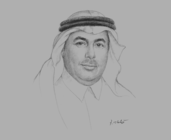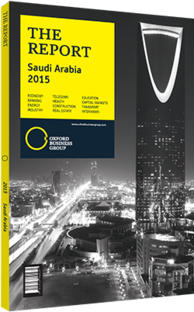Prince Turki bin Saud bin Mohammad Al Saud, President :Interview

Interview: Prince Turki bin Saud bin Mohammad Al Saud
How will the achievements of the first phase of the National Plan for Science, Technology and Innovation (MAARIFAH) affect the second five-year phase?
PRINCE TURKI BIN MOHAMMAD AL SAUD: MAARIFAH-I was focused on establishing the infrastructure for science, technology and innovation (STI) in the Kingdom, and achieved several milestones, including allocating funding of SR8bn ($2.13bn) to support more than 2000 projects in the development of scientific research and technology, as well as the creation of various industrial partnerships. During the first phase of the plan the Kingdom moved up to a global ranking of 35th for the quality of its scientific publications, according to the journal Nature. Thomson Reuters has also highlighted a shifting picture within the G20 over the last decade, in terms of comparing the role of research and innovation in each country, and has reported a 373% jump in the Kingdom’s output of Web of Science papers. Regarding patents, Saudi Arabia has seen a 25% rise in domestic patent applications. The STI infrastructure established during MAARIFAH-I will impact the implementation of the policy’s second phase. The goals set forth for MAARIFAH-II are intended to shape the Kingdom as an STI leader in the Middle East, with the goal of transforming research into an investment in industry for the diversification of the Saudi economy.
How is KACST harnessing solar power for the production of desalinated water?
PRINCE TURKI: The Custodian of the Two Holy Mosques’ Initiative for Water Desalination, which uses solar power for desalination plants, is currently being implemented. It is structured in such a way that it will be carried out over multiple phases. The first phase, which is currently being developed in Al Khafji, will produce 60,000 cu metres per day of water when complete and is expected to be functional by the end of 2016. The second phase is set to produce 300,000 cu metres per day of water. The goal of developing this technology is to eventually apply it to agriculture in the Kingdom.
In what ways are initiatives, partnerships and business opportunities being pursued around technology transfer and assisting researchers?
PRINCE TURKI: Such initiatives have been ongoing for several years now. These include the establishment of the Badir Programme for Technology Incubators and the formation of the Innovation and Industrial Development Institute, which acts as the internal hub for all technology transfer activities and is our main industrial liaising channel. Furthermore, the creation of TAQNIA, a technology company owned by the Public Investment Fund, serves as the commercial arm for Saudi research institutions as well as providing venture capital funding services to industry. All of this has resulted in the emergence of a variety of businesses and market opportunities, particularly among industry-specific companies through partnerships with global leaders in technologies such as solar energy, aerospace and biotechnology.
How are young Saudis being encouraged to continue their studies and pursue a career in research?
PRINCE TURKI: Human resource development for STI is a strategic programme within MAARIFAH that aims to increase the Kingdom‘s global ranking in science and technology. KACST has initiated a number of programmes to ease this transition for potential researchers by exposing them to opportunities in high-quality research before they go on to pursue doctoral studies. One such initiative is the Advanced Training Programme (ATP) at the Joint Centres of Excellence Programme, which involves training young Saudi researchers through partnerships with top academic and industrial institutions, such as MIT, Stanford, Berkeley, Oxford and Cambridge, in order to develop their expertise and research skills. Those researchers who complete the ATP build a repertoire of research and analytical skills that allow them to then become highly competitive candidates for admission to graduate programmes at top-tier, international universities.
You have reached the limit of premium articles you can view for free.
Choose from the options below to purchase print or digital editions of our Reports. You can also purchase a website subscription giving you unlimited access to all of our Reports online for 12 months.
If you have already purchased this Report or have a website subscription, please login to continue.

